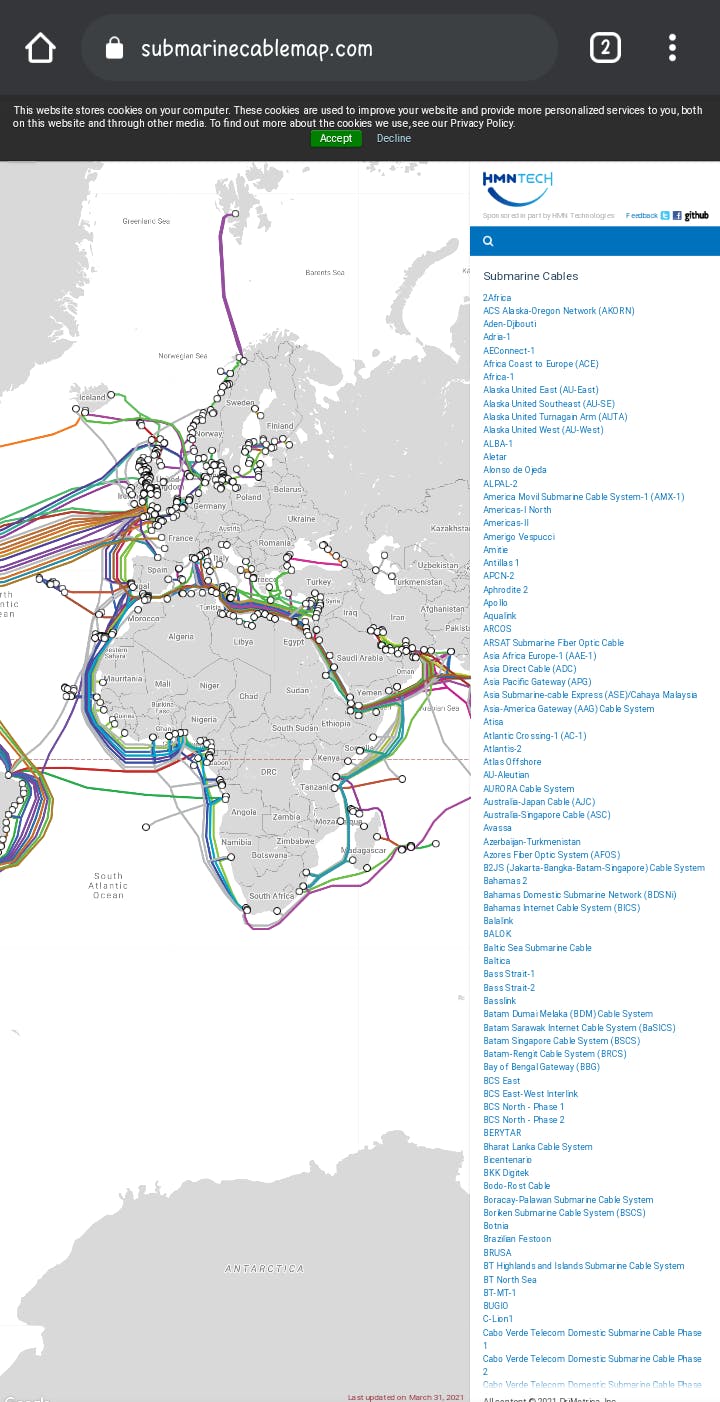The Internet
What is the Internet? Most people think of the Internet as some sort of cloud where everything is stored, that's okay tho.
The Internet however, is a global computer network providing a variety of information and communication facilities, consisting of interconnected computer networks using standardized communication protocols.
But in reality, it is really an interconnection of data cables buried underneath the ground and in the oceans, it's primary purpose is connecting the world's computer systems. check out this link Internet Backbone to get a real-time view of how these cables interconnect around the globe enabling and powering highspeed Internet connectivity.
Components and Terminologies.
- Servers: these are computers online 24/7, used to access websites, they are repositories of data, like online libraries of information.
- Client: any computer that allows you access data on the Internet.
- IP Address: a unique code or identifier each computer has to help other computers locate it.
- DNS Server: A domain name server system is a database system of IP addresses.
- ISPs: Internet service providers.
How Websites work
When you need to access the Internet, you use a Browser, browsers are pieces of software that allow you look up the IP address of websites and be able to receive the data and content it can then render into the beautiful websites we see.
When we make searches on a browser on our computer, the browser sends a message to the Internet service provider, which then relays the message via the Internet Backbone to the DNS, which then looks in it's database for the IP address of the particular website we are looking for. Once the DNS finds the IP address, it sends the address through your ISP back to your computer and browser, which then knows the exact address to find that term or Homepage and then sends a direct request through the ISP to that address.
The Internet backbone allows us open a Laptop in Lagos and access data from a website hosted in Australia and you wouldn't know how far that data has travelled to and fro your fingertips in just a matter of milliseconds.
Constituents of Server Data
The Data we receive from servers usually consist of three types of Files.
HTML: stands for Hypertext Markup Language, this file is responsible for the structuring of the website, if your website was a house being constructed, then HTML can be said to be the builder who designs the structure of the house.
CSS: stands for Cascading Style sheets, this is responsible for styling and designing the website, for modifying and beautifying web pages and the overall website, once again with the building analogy, CSS would be the painter or decorator, beautifying the overall standing structure of the house.
N:B, while a website can be created to be functional with just HTML, the same cannot be done with CSS, you would need a structure to paint on, the structure being HTML.JS: for JavaScript, this deals with the functionality and behaviour of the site, granting the website behaviour, allowing it do more than just display texts, color and images, once again if this was a house under construction, JS would be your electrician that connects switches to turn off and on light bulbs, amongst other things.
All in all, all three of them are the major constituents of modern websites.
See you on the next topic.
Disclaimer: this piece is constituted from notes taken down on my self study journey.

